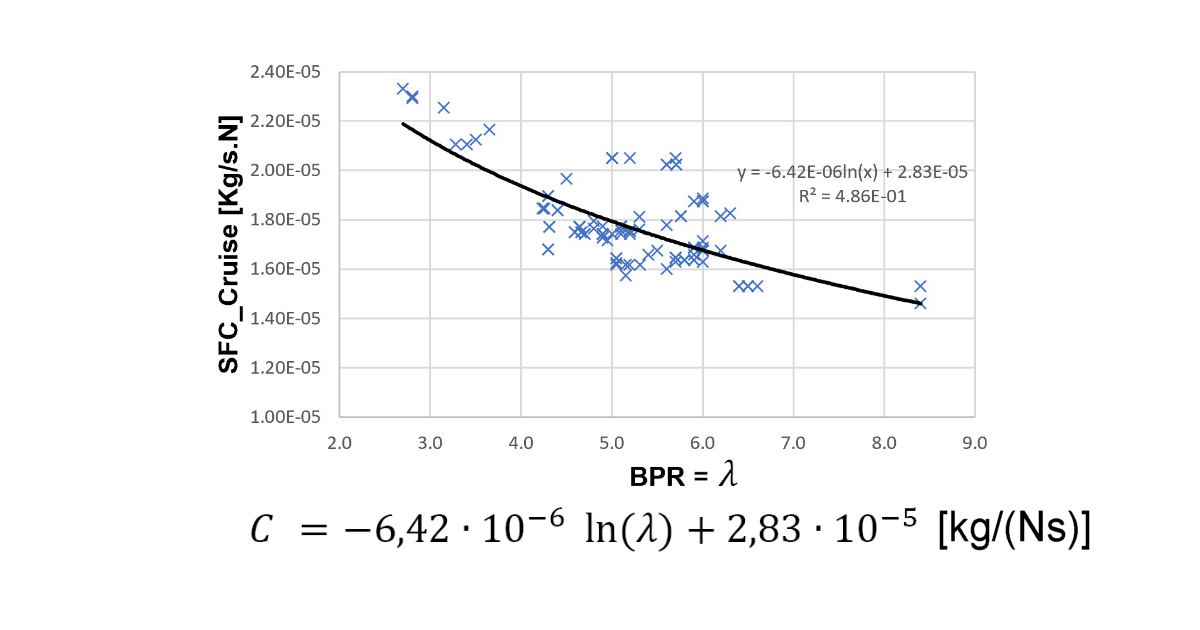

 |
 |
| Download full text: |
 TextHammami.pdf
Size:
1.9M TextHammami.pdf
Size:
1.9M |
| Date: | 2021-09-15 |
| Type of work: | Master Thesis |
| Advisor / Examiner: | Dieter Scholz |
| Published by: | Aircraft Design and Systems Group (AERO), Department of Automotive and Aeronautical Engineering, Hamburg University of Applied Sciences |
This work is part of: |
Digital Library - Projects & Theses - Prof. Dr. Scholz ---
http://library.ProfScholz.de
 |
| Download presentation: |
 VortragHammami.pdf
Size:
1.1M VortragHammami.pdf
Size:
1.1M |
| PERSISTENT IDENTIFIER: | |
| URN: | https://nbn-resolving.org/urn:nbn:de:gbv:18302-aero2021-09-15.018 (to reach this page) |
| DOI: | https://doi.org/10.15488/19165 |
| ARK: | https://n2t.net/ark:/13960/s27w0j9hrzz |
| Associated research data: | https://doi.org/10.7910/DVN/UW6FAP (Data) |
| Download online versions: |  DataHammami.html (https://purl.org/aero/EngineDatabase/html) DataHammami.html (https://purl.org/aero/EngineDatabase/html)
|
 DataHammami.xlsx (https://purl.org/aero/EngineDatabase/excel) DataHammami.xlsx (https://purl.org/aero/EngineDatabase/excel)
| |
| URLs registered with URN: | Show all links associated with this text! |
| CATALOG ENTRY: | |
| DNB: | Check inclusion of this title in German National Library! |
| WorldCat: | Check inclusion of this title in WorldCat! |
| DataCite: | Check inclusion of this title in DataCite! |
| Google Scholar: | Check inclusion of this title in Google Scholar! |
| OpenAIRE: | Check inclusion of this title in OpenAIRE! |
| Semantic Scholar: | Check inclusion of this title in Semantic Scholar! |
| BASE: | Check inclusion of this title in BASE! |
| CORE: | Check inclusion of this title in CORE! |
| Google: | Check inclusion of this title in Google! |
| Keywords, German (GND): | Luftfahrt, Luftfahrzeug, Kraftstoffverbrauch, Triebwerk |
| Keywords, English (LCSH): | Aeronautics, Airplanes--Fuel Consumption, Airplanes--Motors--Thrust, Aircraft Drafting--Design and Construction |
| Keywords, free: | Mathematical Models, Singular Value Decomposition, Regression Analysis, Electronic Spreadsheets, Specific Fuel Consumption, Thrust, Engine, Mass, Diameter, Volume, Length, Aircraft Design, Sizing, Minimum Mean Square Error, Flugzeug, Schub, Flugtriebwerk, Strahltriebwerke, Mantelstromtriebwerk, Entwurf, Singulärwertzerlegung, Regressionsanalyse, Nichtlineares mathematisches Modell, Dimensionierung, Masse, Durchmesser, Länge, Volumen, Tabellenkalkulation, SFC, TSFC |
| DDC: | 629.13, 629.133, 621.4352, 333.79 |
| RVK: | ZO 7420 |
© This work is protected by copyright
The work is licensed under a Creative Commons Attribution-NonCommercial-ShareAlike 4.0 International License
CC BY-NC-SA
https://creativecommons.org/licenses/by-nc-sa/4.0

Any further request may be directed to:
Prof. Dr.-Ing. Dieter Scholz, MSME
E-Mail see: http://www.ProfScholz.de
VISIBILITY: (more)
Quote this text:
| ISO 690: HAMMAMI, Mohamed Oussama, 2021. Turbofan Specific Fuel Consumption, Size and Mass from Correlated Engine Parameters. Master Thesis. Hamburg University of Applied Sciences, Aircraft Design and Systems Group (AERO). Available from: https://nbn-resolving.org/urn:nbn:de:gbv:18302-aero2021-09-15.018 [viewed YYYY-MM-DD]. |
Major results / graphical abstract:


 Prof. Dr. Scholz
Prof. Dr. Scholz
 Aircraft Design and Systems Group (AERO)
Aircraft Design and Systems Group (AERO)
 Aeronautical Engineering
Aeronautical Engineering
 Department of Automotive and Aeronautical Engineering
Department of Automotive and Aeronautical Engineering
 Faculty of Engineering and Computer Science
Faculty of Engineering and Computer Science
 Hamburg University of Applied Sciences
Hamburg University of Applied Sciences